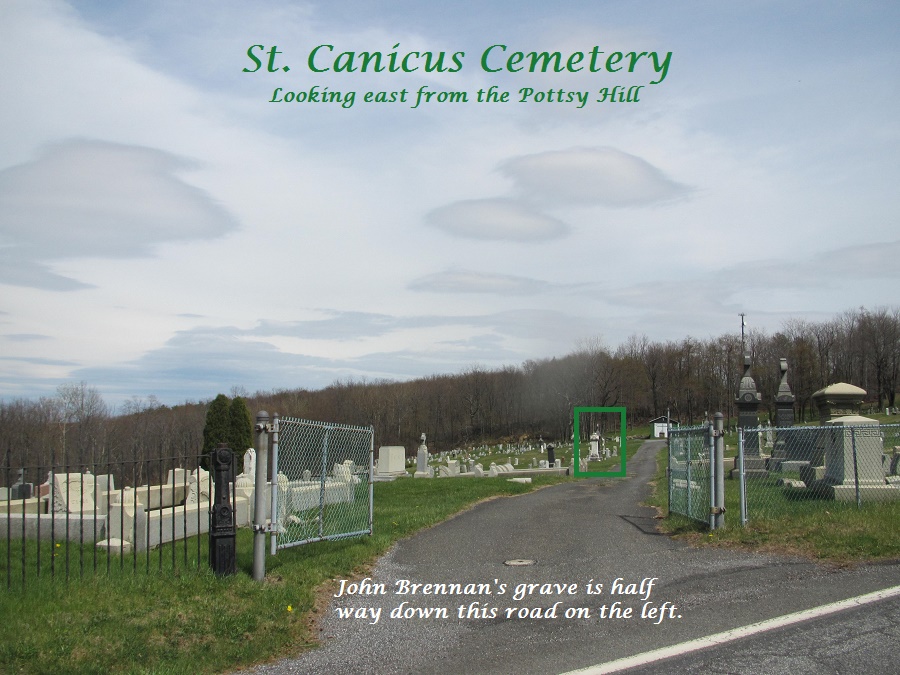Dolce Sisters in Vaudeville
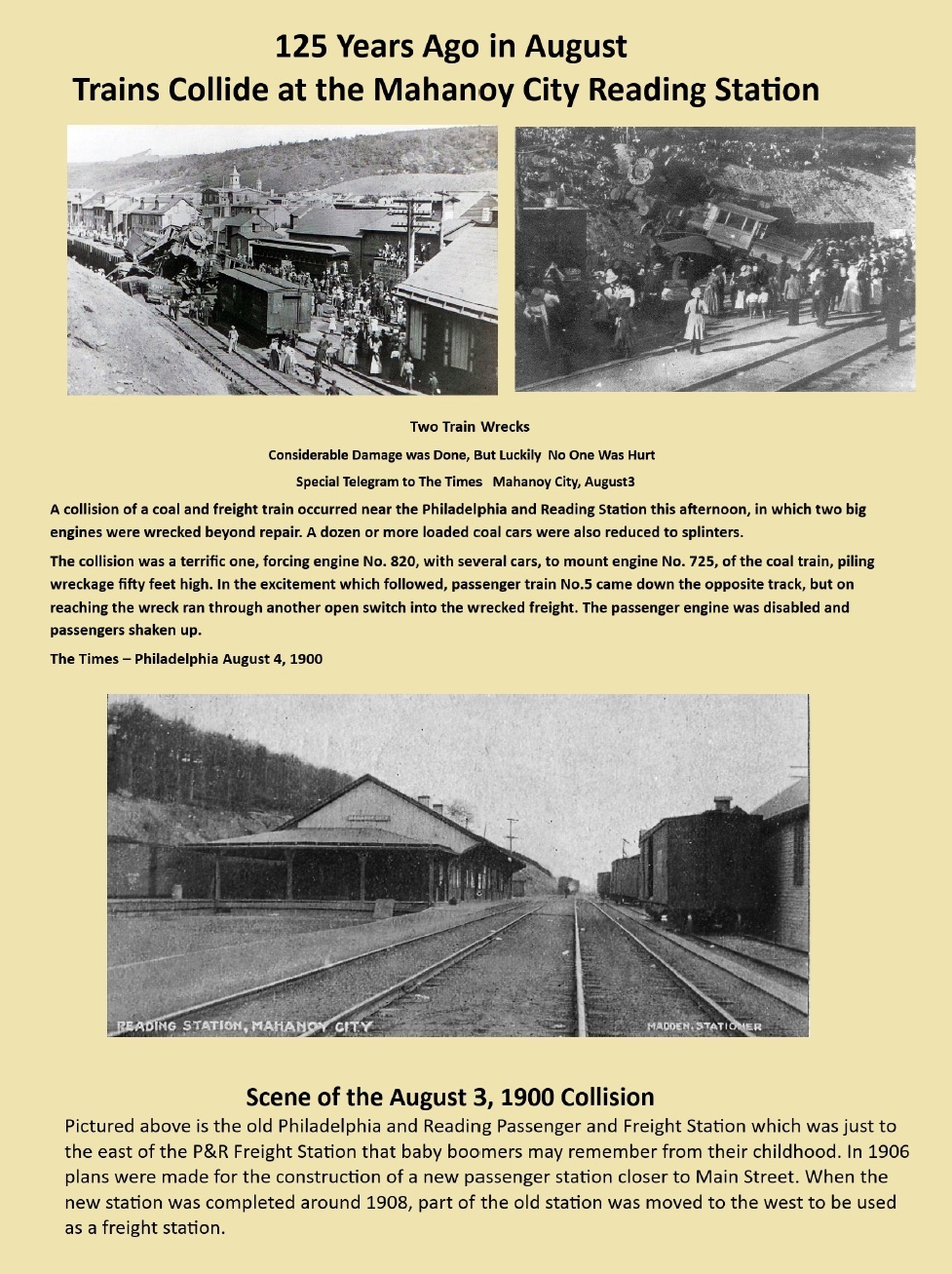
Pascoli's Demolition and the Decline of a Historic Mahanoy Block
By Terry Rang
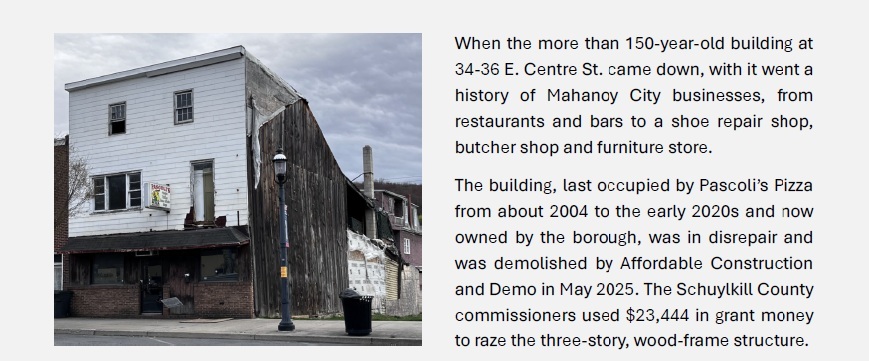
To read the entire story go to the link below.
Pascoli's Demolition
Ninety Years Ago - Prohibition Ends

To read more of Terry Rang's story about her uncle A. John Oakley go to the link below.
Mahanoy's Artistic Heritage- A.John Oakley
The Reading Railroad and the Lehigh Valley Railroad helped Mahanoy Grow by Terry Rang
MAHANOY CITY - When the first passenger trains rolled into Mahanoy City in 1863, the town was in its infancy. The area’s population was small but growing as anthracite demand soared. While passenger trains weren’t new to Pennsylvania, they were to the Mahanoy Valley. With engines spewing steam, air pumps hissing and whistles blaring, the trains transported residents to local villages and eventually to places many had never been before. They didn’t offer luxury rides, just the easiest way to travel.
To read the entire article go to the link below.
Passenger trains helped Mahanoy City and the Patches Grow
To read the entire article click on the link below.
A letter to home - November 1918
The Sad Loss of Two More Mahanoy Landmarks

The demolition of the Kleckner Store and the Merchant's Bank in the first block of East Centre Street has been in progress for more than a month. The Kleckner Building housed Mahanoy City's Masonic Lodge rooms on the second and third floors. Dave Engle has compiled a pictorial history of the Masonic Lodge over the years with information from the Engle family archives.
Terry Rang has written a short history of the Merchant's Bank and the Teen Canteen. The Merchant's Bank Building would have celebrated its 100th birthday this October and area teenages of the 1950s-1970s spent many evening hours in that building when it housed the "Canteen".
The historical society would like to thank both Terry and Dave for their fine research and writing . You can access both articles at the links below.
A Pictorial History of Mahanoy City's Masonic Lodge by C. David Engle
Teen Canteen, former Merchants Bank, demolition leaves only memories by Terry Rang
Mahanoy City's Worst Fire and Its Aftermath
Community Park - West Centre Street - Then and Now
The picture below is perhaps the only street view of the 100 block of West Centre Street on the north side before the entire block burned to the ground during the Memorial Day Fire of May 30, 1945 . Thirty-eight families lost their homes and twenty-one businesses were burned out in Mahanoy City's worst fire.. If you don't know about the fire you can read about it on this web site at the link below.
1945 Memorial Day Fire
The two pictures below show the devastation caused by the massive fire. The south side of Centre was also affected as was portions of Market Street , Railroad Street and the Guinan Department Store at the beginning of the 200 block West Centre. The fire started in the 100 block and consumed the block in its entirety.
The picture below shows the entire 100 block north side leveled and the central part of the south side either leveled or gutted.
The map below shows the business that were destroyed. The map is a reverse image of the picture above. So the Baron Store was at the east end of the block and McLarens was at the west end. After the fire Mclarens located across the street at the beginning of the 200 block of West Centre south side. This is the store you probably remember. Barons was where the Village Inn stands now and Mclarens was where the Family Dollar Store is now,
After the fire businesses began to occupy the east and west ends of the block. The M&D Cafe opened on the east end of the block and Collins gas station occupied the west end of the block. The middle of the block was a vast"empty" short for empty lot. When I was a kid in the 1950s we played war and other games in four "empties. One was where the "new" McCann School building is now located.
The second one was where the parking lot at the end of the 100 block south side of East Centre Street is now located. This lot was next to Maff's Barber Shop. In the back of the empty on Market Steet there was a makeshift open shed with beanches and a table where some local senior men played cards and cursed- we thought- in Italian.
The third empty was cauused by the Memorial Day fire also. It was where the Bell telephone building now stands on the south side of the 100 block West Centre. The east and west end of that block where largely spared by the fire, but the middle was leveled.
The fourth empty we frequented was the burned out lot(s) in the pictures above. It was an empty for over fourteen years and so provided a rather dangerous playground for a generation of Mahanoy City kids. I can stll here my dad say" Stay out of the empties."
The aerial shots below came from negatives which were given to the historical society by the late Diane Ambrose whose parents owned the Mahanoy City Photo Studio. The first picture below shows the empty lot in the lower left corner. Across the street you can make out the other empty caused by the fire east of what is now McGuire's Cafe.
The picture below was taken shortly after the building of the Community Park in the middle of the 100 block West Centre - north side . The park was dedicated on September 1, 1960 when I was in fifth grade. We had a lot more fun in the empty that we did in the park, but now as a senior citizen I miss the park and its benches.
Below is a colorized version of the Tim Zoba photo that appeared in the Record American. In this picture you can see clearly the empty across the street that would soon become the Bell Telephone Building. Next to the empty lot going east is the Hilltop Fur Building which was built in 1948 as the Manhattan Fur Company on the lot which housed the Triangle Shoe Store which was leveled in the fire. The new Triangle store moved a block east on the north side. The Hilltop Fur Building now is home to a sandwich shop and gym. The buildings to the east of the fur shop survived the fire. See the map below.
The map below shows the fire damage to the 100 block West Centre Street south side. Red means the property burned to the ground. Orange means the property was gutted and unsalvageable. Grey means the property sustained smoke and water damage , but was saved. Green means the property was unharmed. Again this map is in reverse order of the picture above. O'Connor's Store is on the far left in the picture.
The pictures below show the site of the Community Park today.
Mahanoy City's Little Known Artistic Heritage
The five internationally known artists pictured below all visited Mahanoy City during its peak years from 1900 to the 1930s to draw, sculpt and photograph scenes related to the anthracite coal industry and the miners who risked their lives to bring the " black diamonds" from deep within the earth to the surface.
To Learn More About These Artists and Their Connection to Mahanoy City Click Here
On June 2, 2022, our past president, Charles Palulis, passed away after a courageous battle with cancer over the past few years. To the end Chuck kept his sense of humor. He visited us in the historical society museum and research room almost every week despite constant pain. An avid photographer, Chuck recorded the history of the Mahanoy area for over sixty years. Below is a link to the Palulis web page where you'll find a sample of some of Charles' photos many of which were taken in the 1960s . I'll add more photos periodically.
Charles Palulis Photos

Myers' Drug Store - 22 West Centre Street -1900
Did the man in the picture above poison young Elsie Myers inside Myers' drug store ?
We knew this property as Timm's Pharmacy up until 1995.Now it's CJ's Dog House.
To find the answer to the question and to read about the life of the infamous Robert Taylor read Terry Rang's article at the link below.
A Mahanoy City Mystery- Was Elsie Myers Murdered?
Thursday, November 10 marks the 100th anniversary of the fire that destroyed St. Nicholas Union Church in Suffolk. Dave Engle has compiled a history of the church with images and information from the Engle family archives.
To read Dave's excellent article go to the link below.
The History of St. Nicholas Union Church by Dave Engle
To read the history of the building, the newspaper that was published there and the family that made it happen go to the link below.
The Saule: History, Saving the Newspapers and Demolition of the Building
Click on the link below to read Terry Rang's article
The Record American Revisited: Mahanoy City in 1922
July 4, 1942
Parade and Flag Raising During the First Year of World War II
Link to the July 4, 1942 Page
Life's Resume- Illustrated Memories in Verse of a Childhood in Mahanoy City
Memorial Day - Lest We Forget
In honor of Memorial Day, below you will find links to articles and information about Mahanoy area veterans from the Civil War to Viet Nam
Mahanoy City in the Civil War
Mahanoy City was in its infancy while the Civil War was in progress. Although the town had a few settlers prior to 1863, it did not become incorporated until December of that year. However, since it was the gathering point for the region, quarters for "enlistment, recruiting and drafting" were opened on West Centre street, toward the west end of the first block below Main street. A tent was placed at the northeast corner of Centre and Locust streets, which was used as an office, while a larger tent occupied the lots at the northwest corner of main and Centre streets to provide living quarters for the officers in charge of the recruiting.
During the time of the draft, the government sent a large body of soldiers to assist those who were already here. They tied their horses to a fence which enclosed a corral of deer, owned by Edward Boyer, who had a store in the center of the block. The horses of the soldiers nibbled at the fence until the timber was weakened and the posts collapsed. The deer sped away but were caught some time later in the vicinity of the Hills. Fred Moyer, one of the community's pioneer residents, recalled having seen the first volunteers leaving Mahanoy City for service in the Union Army.
The veterans of the Civil War organized Severn Post, Grand Army of the Republic in May, 1868, naming their post for Captain Isaac Severn, a townsman. They began the custom of decorating the graves of departed veterans when but a half-dozen were buried in the three cemeteries then existent -- German Protestant, St. Canicus and St. Fidelis.
From Rrminisences of Mahanoy City by Augusta Dillman Thomas and Joseph Davies
Mahanoy City in the Spanish American War
"Remember the Maine!" and "Cuba must be free!" were the clarion calls that summoned the youth of the nation to arms in 1898. The sinking of the battleship, "Maine" off the coast of Cuba was regarded by the citizenry as a flagrant insult to the United States which they could not and would not tolerate.
To quote from the 1907 history: "Strained relations had existed between the United States and Spain for some time previous to the destruction of our battleship, this feeling being engendered on the part of Spain by the attitude of the United States in espousing the cause of Cuba, a dependency of Spain, in her struggle for independence. The presence of the Maine in Havana harbor was regarded as a menace to Spanish dignity, and the vessel was blown up by the explosion of a hidden mine, and that explosion was the death-knell to Spanish power on the American continent.
"A wise conservatism was inaugurated by the government at Washington, and a thorough investigation was commenced to fix the responsibility for the terrible disaster; but the spirit of patriotic resentment could scarcely be controlled. People of all political parties censured the administration for tardiness and inactivity. The cry went abroad that the opportunity was given to Spain to prepare for the war which was recognized as inevitable, and that she would bring her 'powerful navy' to our shores and crush us at a single blow! But two naval battles settled the Spanish navy question, and put it out of the consideration during the war.
"The sons of the North and of the South, with wonderful unanimity, offered their services to the government, and when a call for troops was made, the quotas for the different states were filled within a few hours, and thousands of disappointed applicants were turned away. Schuylkill County responded with her usual promptness, and sent seven companies to the front, while hundreds were in readiness for a second call."
Fully half of the Eighth Regiment, Pennsylvania Volunteer Infantry, were Schuylkill County men, who comprised Companies, E, Mahanoy City; B, Tamaqua; F, Girardville; H, Pottsville, and K, St. Clair. There were also two companies from the county in the Fourth Regiment: Co. F, Pottsville, and Co. G, Pine Grove.
The Eighth Regiment was mustered into service, May 12, 1898, with forty-three officers and 596 enlisted men. It was subsequently recruited to a maximum of eighty men to each company. This was the limit allowed under the state's quota. This regiment established Camp Alger, near Falls Church, Virginia, one of the old camping grounds of the Civil War.
Company E, which was recruited in town, numbering 105 men, left Mahanoy City, April 28, 1898, for Mount Gretna, Lebanon County, where it was mustered in. From Mount Gretna it moved to Dunloring, Virginia, where it aided in establishing Camp Alger. After a while it returned to Camp Meade, near Harrisburg.
The regiment was ordered south and went into camp near Augusta, Georgia, at Camp McKenzie, in November 1898. During the preceding month, October, Company E was dispatched to Philadelphia where it participated in the Peace Jubilee parade.
While at Camp Meade, the local soldiers cast their ballots during the gubernatorial election, the popular candidate being William A. Stone, who was elected. Co. E. men remained at Camp McKenzie, Augusta, Georgia, until the latter part of January, 1899. They were mustered out of service on May 7, 1899, after a continuous service of about ten months.
"Assuredly," the writer of the 1907 history concludes his chapter, "it is no reproach upon the soldiers of the Spanish-American War that they did not all see active service, for a better-drilled, better organized or better equipped army never enlisted in any cause.....That they performed their whole duty, and were prepared for, and constantly expecting greater achievements, is a characteristic of the American volunteer soldiery. One of the grandest achievements in modern ages was accomplished through the medium of this war, yet without great loss of human life. A weak and struggling little republic was established on American soil, and became the ward of a nation devoted to the principles of freedom and equality among men."
From Rrminisences of Mahanoy City by Augusta Dillman Thomas and Joseph Davies
Mahanoy City Civil War Veterans
Mahanoy City Spanish American War Veterans
World War I
World War I Deaths
Mahanoy City Chronicles- Word War I Years
WWI Doctor - U.S. Representative Ivor Fenton
Mahanoy Native Buried at West Point
World War II
World War II Deaths
Mahanoy City Chronicles - World War II Years
Jerome Szematowicz- First WWII Casulty
Sgt. Harold O. Messerschmidt- Medal of Honor WWII
Sgt. Messerschmidt Memorial from Raddon, France
Sgt. Francis Chesko-From Barry's to the Bulge
Cpl. Steve Gavula- Korean War POW
Korean Conflict Deaths
Viet Nam - Killed in Action
100 Years Ago- No April Fool
On April 1, 1922 the Mahanoy City High School Boys' Basketball Team won the school's first and only state championship. The 1922 squad was coached by the legendary John L. Goepfert whose career spanned thirty-four seasons with a record of 807 wins and 179 losses.
Read about John L. Goepfert and the 1922 State Champs

Here are the links to all the sites and/or pages listed in the Newsletter
>
The Immortal Peddler
The Log Cabin
Mahanoy City Businesses Through the Years
Colliery Gallery
Mahanoy City's Charter Signers - 1863
Christmas in Mahanoy City - 1941

A few days after Pearl Harbor was bombed and the United States entered World War II, the Record American , Mahanoy City's newspaper, published the Christmas advertising edition. The fifty-two page paper published on Friday, December 12 contained news of the early days of the war, local news and sports and dozens of pages of Christmas ads for the numerous local businesses that served the borough.
In 1941 Mahanoy City's population was over 13,000, more than three times as many people as now. There was no need to leave town to shop for Christmas. Anything Santa needed to fill his sleigh could be found along Centre Street in all kinds of stores and shops. In between shopping you could take a break at one of your favorite restaurants or saloons that could be found almost on every block from the east end to the west end.
How many of the businesses that advertised in 1941 do you remember from your childhood then or in the 1950s and 1960s? Click on the links below to browse the Record American from eighty years ago.
Record American Christmas 1941 pages 1-8
Record American Christmas 1941 pages 9-16
Record American Christmas 1941 pages 17-25
Record American Christmas 1941 pages 26-34
Record American Christmas 1941 pages 35-43
Record American Christmas 1941 pages 44-52
Record American December 24, 1941
The Original Boston Run
The original patches that made up the St. Nicholas area of Mahanoy Township were Cakes (now St. Nicholas), Wiggans, and Phillips (now called Suffolk). These hamlets, which followed the winding and meandering course of the Mahanoy Creek and its tributaries, had their beginnings in 1861 and their remnants can still be seen today. Near them in 1862, a fourth village, named Boston Run, was settled. The houses known today by that name were at first called Lower Wiggans and considered part of the Wiggans Patch. The name changed when the residents of the original or “Old” Boston Run began to move up the hill to Lower Wiggans or “New” Boston Run. Today, Old Boston Run exists only as a memory. To read more click on the link below.
The Original Boston Run by C. David Engle
80 Years Ago - December 7, 1941
Japan Attacks Pearl Harbor
United States Enters World War II
Click the link below to read the Record American from December 8, 1941
Record American- December 8, 1941
Click the link below to read about Sergeant Jerome Szematowicz
Sergeant Jerome Szematowicz Page
Labor Day 1892- The Dedication of Mahanoy City's Civil War Monument
To read C. David Engle's story about the dedication of the Civil War Monument 129 years ago this week go to the link below.
Mahanoy City's Silent Sentinel
The colorized photo above shows a large crowd gathered at Centre and Main Street in front of the old Cooperative Building which was located at the current site of the Mahanoy Area Historical Society.
On August 28, 1890 the Severn Post of the Grand Army of the Republic hosted a huge parade in Mahanoy City. To read all about the parade and to view some recently found pictures from the Elwood Young Collection go to the link below.
They Drank from the Same Canteen by C. David Engle
The gentlemen pictured above served Mahanoy City as Chief Burgesses over 100 years ago. How much do you know about the job of Chief Burgess, the position that replaced it in 1961and why that will all change at the end of this year.
To find out read Terry Rang's article by clicking on the link below.
Position Ends After Over 150 Years
Sheppton MineCave - In- A Retrospective - One Year Later by Bill Coombe
100 Years Ago
Christmas in Mahanoy City - 1920
Click below to expand the image above.
Christmas in Mahanoy City 100 Years Ago"
Click below to access the Record American newspaper from 100 years ago this week.
The Record American December 20-24 1920"
Shortly before Thanksgiving we learned of the death of Ed Conrad and Francis Chesko. Ed graduated from Mahanoy City High School in 1956 and wrote for the Record American, Evening Herald and Standard Speaker as well as newspapers in Philadelphia and Canada. Ed was an avid fossil hunter, historian, and raconteur. To read more about Ed Conrad click on the link below.
Ed Conrad Page
Francis graduated from Mahanoy Township High School in 1942 and soon afterwards entered the U. S Army. He landed on Utah Beach on June 8, 1944 and was wounded shortly afterwards. After the Purple Heart recipient recuperated in England, he returned to mainland Europe and took part in the Battle of the Bulge. You can read all about it atthe link below.
Sergeant Francis Chesko Page
Ed and Francis were regular Friday afternoon visitors to the historical society. Each had numerous stories and anecdotes to share with our volunteers and visitors. Both Ed and Francis will be missed.
 Above: Ed Conrad with fossil, Ed and Sheppton mine cave-in survivor, Dave Fellin, Sgt. Francis Chesko and Francis on his porch on East Centre Street ready to welcome friends and well-wishers.
Above: Ed Conrad with fossil, Ed and Sheppton mine cave-in survivor, Dave Fellin, Sgt. Francis Chesko and Francis on his porch on East Centre Street ready to welcome friends and well-wishers.
The Mahanoy Area Historical Society covers the regions which comprise the Mahanoy Area School District: Mahanoy City, Mahanoy Township, Delano, Gilberton and Ryan Township. Below you will find the results of the last twenty-five presidential elections that were held in the Mahanoy area. In looking over the following charts you will find the answers to the following questions:
- Of the five voting areas listed, which one picked the winner the most times in the last 100 years?
- Which voting area has always voted Republican?
- Which presidential election year saw the greatest local turnout ?
- Which two regions have voted Democrat in twenty-one of the twenty -five elections?
- Which area has increased the number of voters consistantly over the last one hundred years?
- Which third party candidate received the greatest number of votes ?
- What election year had the closest race in Mahanoy City?
- Which three Republican candidates swept all five voting regions?
- Which candidate won the greatest percentage of the local vote in the last 100 years?
- Who will win in 2020?
The Last 25 Presidential Elections in the Mahanoy area
The Mahanoy Area Historical Society will be closed for the remainder of April. Please check back here in early May for our re-opening date. We are unable to fill PayPal book and DVD orders until we re-open in May. Sorry for the inconvenience.
To view all the pictures from the 1955 Disneyland Program click on the link below.
1955- Mahanoy City Public Schools - Grades 1-6 Present Disneyland
The influenza epidemic of 1918 reached its peak in Mahanoy City just one month before World War I, the Great War, ended with the signing of the armistice on November 11, 1918.
During the 1918 flu epidemic the young were most at risk. Persons born in the late 1800s may have acquired immunity from epidemics which occurred then.
Young soldiers were especially vulnerable because of the close quarters they lived in whether it be in barracks, on ships or in the trenches.
One of the saddest stories to come from Mahanoy City that October in 1918 was the circumstances of the death of young soldier, Joseph Casper, who enlisted at age fifteen and died at Camp Logan, Texas from complications of the flu.
You can access the Mahanoy City Record files for October of 1918 by clicking on the links below. They are large PDF files and may take some time to load on your browser.
Mahanoy City Record October 1 -7 1918
Mahanoy City Record October 9-15 1918
Mahanoy City Record October 16-22 1918
Mahanoy City Record October 23-31 1918
Two New Page Added to the Website
" Our Beloved Little City" is a mini-book by C. David Engle on the history of Mahanoy City's historical pageants of 1938 and 1963. Click below to open OBLC.
Our Beloved Little City by C. David Engle
Mahanoy City April, 1973 is a collection of photos taken by Ed Curvey. Click below to see Ed's pictures and some additional info.
Mahanoy City - 1973
On Sale Now- Go to the For Sale Page
100 Years Ago on February 13, 1917
Many of us can recall some large Mahanoy City fires of the past sixty years: the Herman Coffee fire, the Toy Shop block fire, the Morton's Furniture block fire and more recently, the fire in the two hundred block of East Centre. These are just a few of the large fires in my memory - there are others. Of course the largest fire in Mahanoy City history was the Memorial day fire of 1945. Other fires covered on this web site are the Kaier Opera House fire of 1913 and the Mahanoy Township High School fire of 1938.
February 13, 2017 marks the 100th anniversary of two fires that have been practically forgotten. These fires occurred on the north side of the 100 block of West Centre Street and on the south side of the 1000 block of East Centre Street five hours apart on February 13, 1917. The property loss from these two fires amounted to $88,000. Adjusting for inflation over the past one hundred years that property loss would be valued at almost two million dollars today.
To read more about these two fire and a $80,000 fire which occurred in Girardville the next day click on the link below.
Mahanoy City's $2,000,000 Fire - February 13, 1917
New Page Added:
Mahanoy City Business Directories 1869-1929
"Beneath this mound my body lies defiled by cruel scars...."
When I was old enough to hike on the mountains around Mahanoy City - about age 8 in 1957- I would sometimes tramp up the Pottsy with my dad to pick huckleberries along the Pennsy tracks on the way to the Bore Hole.
Near the left turn at the first cemetery, the Slovak Lutheran, we took a short path that my dad called "the Indian Path". After leaving the Indian Path we entered St. Fidelis Cemetery and climbed the hill to the Kaier family grave site. From this vantage point we could look down at the town. In the distance, less than a mile to the northwest, we could see the Kaier Brewery where my dad worked. I now wonder what went through my dad's mind as we sat in the grass near Kaier's grave and gazed at the brewery that C.D. Kaier had built .
After a short break in St. Fidelis, we continued our hike toward the Pennsy tracks. On the way we often stopped in St. Canicus Cemetery. It was there sometime around early July of 1957 or 1958 that my dad first pointed out to me John Brennan's grave and the poem that was etched on the stone sixty-seven years earlier.
In 1957 the words of the poem were still fairly legible. My day could recite the poem from memory and I would look at the words as he stood back from the grave and began," Beneath this mound my body lies..."
Down through the years I visited John Brennan's grave occasionally when I was in the vicinity of the cemetery. I noticed as the years passed that the poem was becoming less and less readable. By the time the poem was very hard to make out I could recite it from memory.
I had often wondered who John Brennan was, where he lived and how he came to be " crushed at the end of day by Reading Railroad cars"?
Those questions were finally answered this week with the help of the historical society's digitized files of Mahanoy City's Tri-Weekly Record, and my accounts with Ancestry.com and Newspapers.com.
Using the information on the stone, I searched the Tri-Weekly Record and newspapers.com and came up with the clippings below. They answer the questions I had wondered about for so many years. From ancestry.com I found out that in 1870 the Brennan family lived in Mahanoy Township ( Jackson's patch) and consisted of Lawrence Brennan, his wife Catharine and six children: Catharine, William, John, Thomas, Mary and Sarah.
I often thoought how hard it must have been for Lawrence and Catharine Brennan to lose two sons, two years apart, both at the age of twenty-six.
If you go by St. Canicus Cemetery perhaps you can stop and take time to visit John Brennan's grave and pray for him who loved us all when you are kneeling on his grave.
Click here to hear the poem recited at the gravesite in 2011
If You Go
The date of the Reading Railroad collision pictured below has been a mystery. It was known to have occurred around the turn of the century from the elements of the pictures. I recently uncovered the newspaper article below at www.newspapers.com. The mystery is now solved. The accident occurred just east of the freight station on August 3, 1900. You can see the northeast corner of the freight station on the bottom right part of the second picture.
A Walk in the Woods - 1928
Click the link below to access an editorial which appeared in The Record American on August 4, 1928 in the midst of a mid summer heat wave. The author sought relief from the the hot pavements of Mahanoy City by taking a walk on the mountanside just south of the borough. We would certainly like to determine the identity of the author as this lyrical piece of writing gives one a true sense of what the author experienced in his jaunt along the lokey tracks almost ninety years ago.
A Walk in the Woods -1928


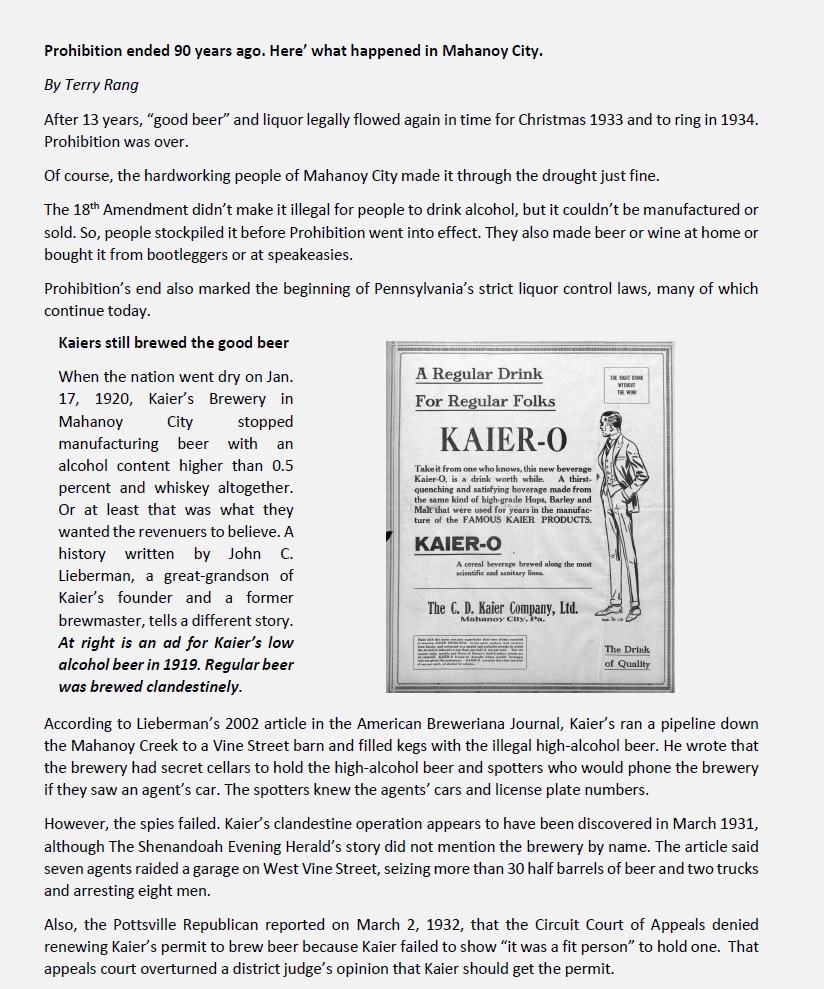
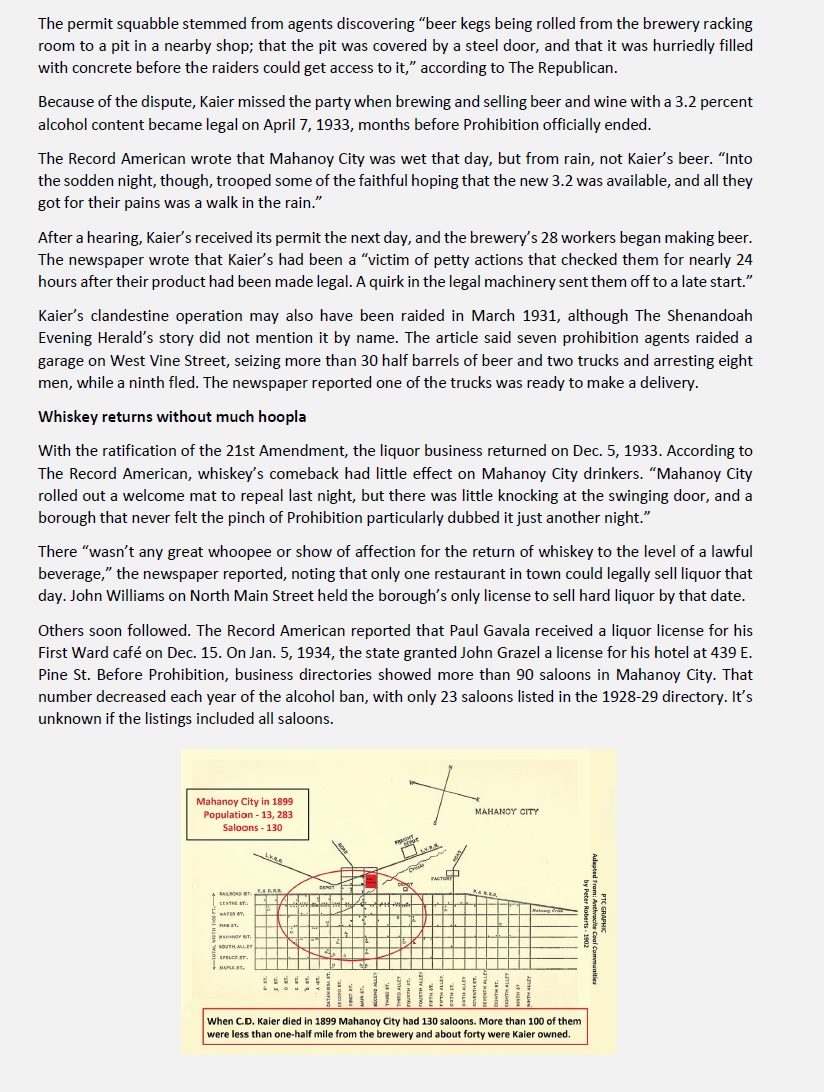
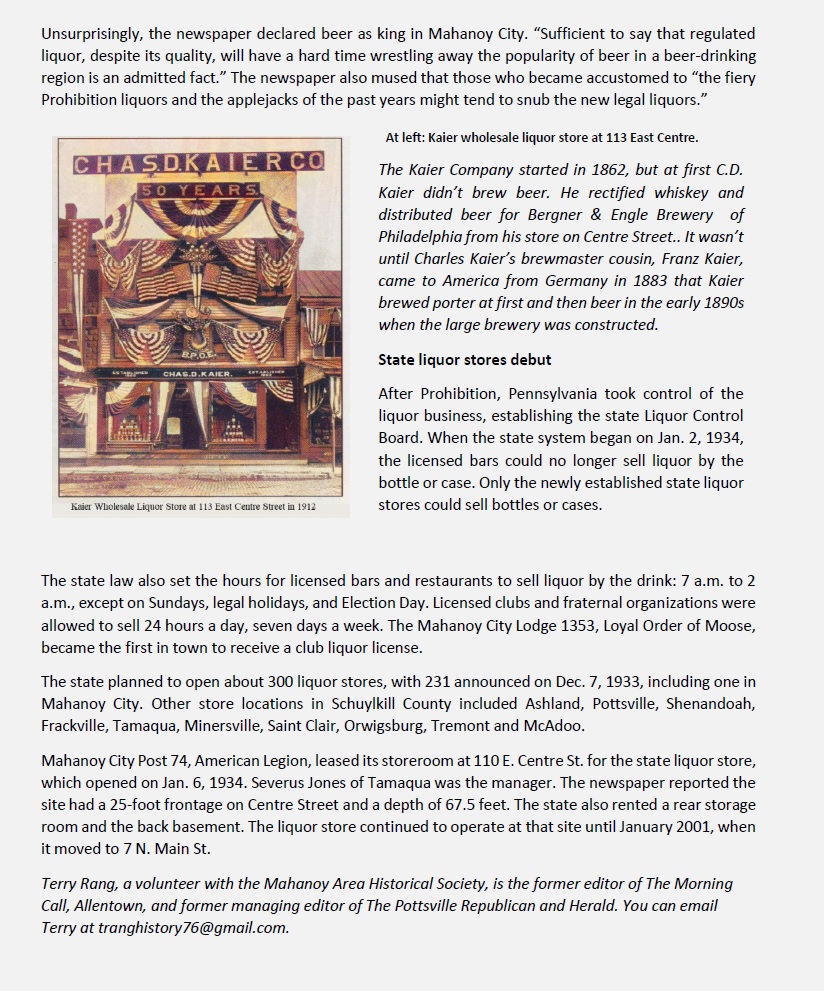
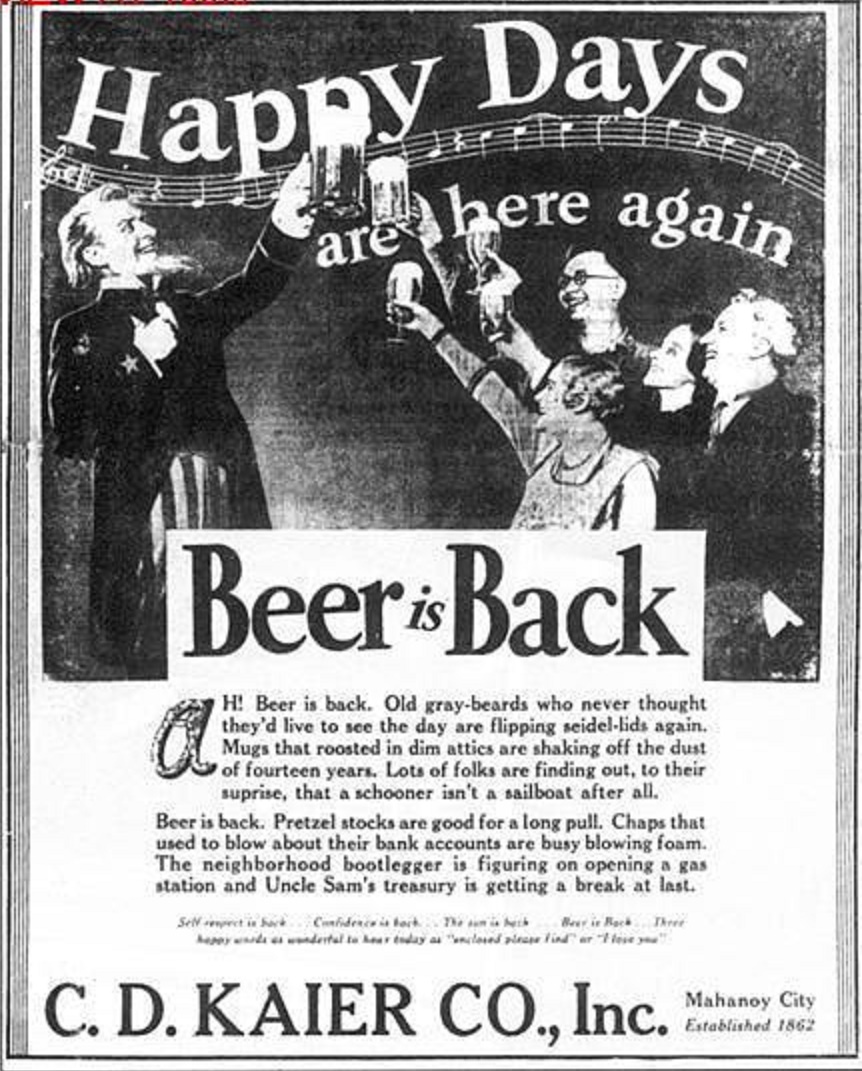

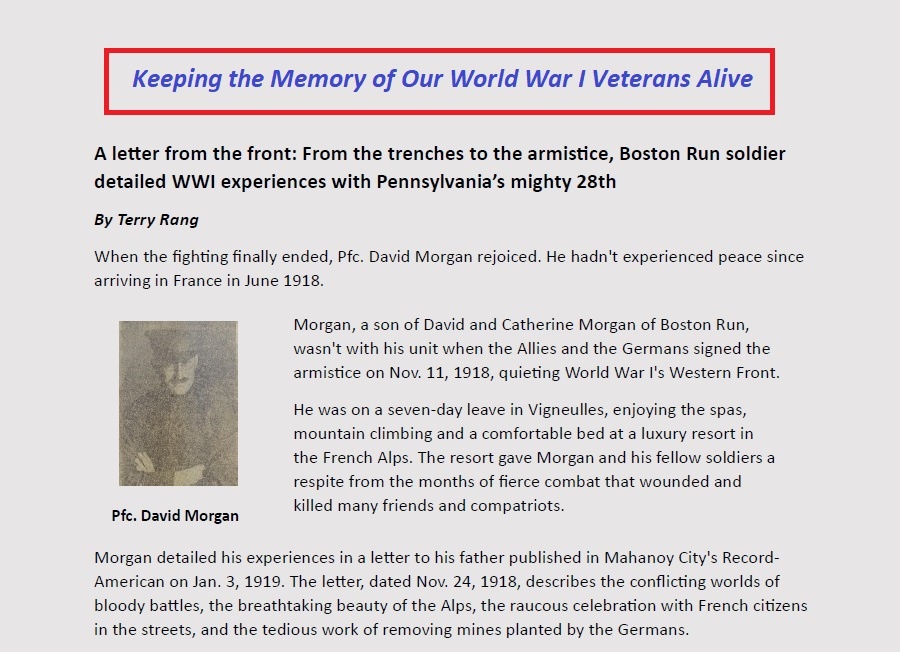


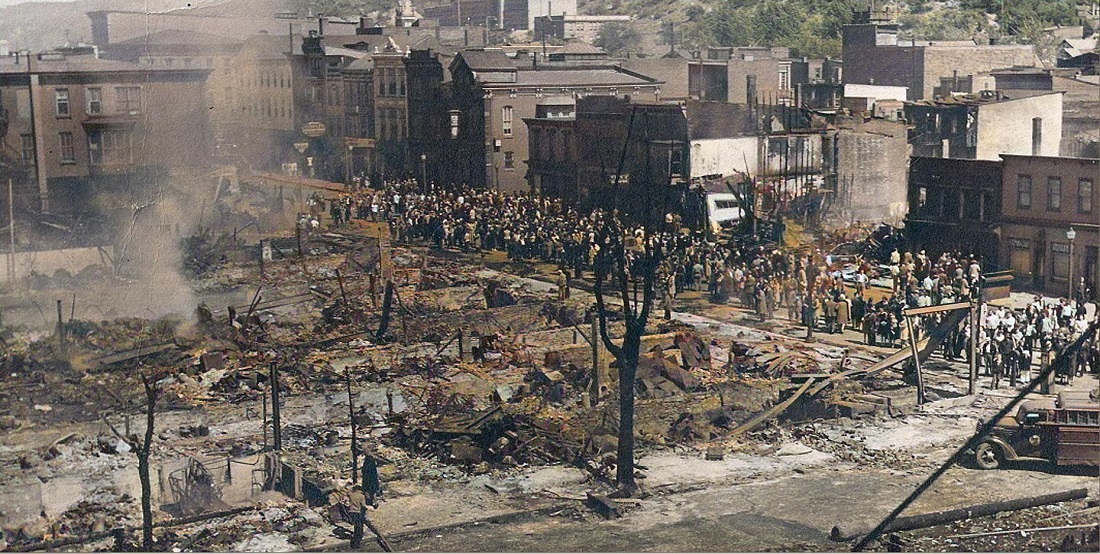





.jpg)



































